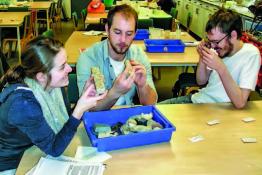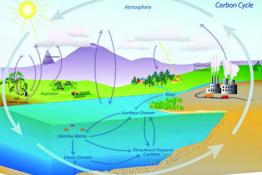Osmotic power: a fresh look at an old experiment
Issue 354 | Page 94 | Published Sep 2014
Description
Students are given the opportunity to try a lesser known method of providing an energy source. Electricity from osmotic pressure might seem a far-fetched idea but this article describes a prototype in Norway where the osmotic pressure generated between salt and fresh water drives a turbine. This idea was applied in a student investigation, where they were tasked with researching which alternative materials could be used for the semipermeable membrane and how advances in nanotechnology could provide a suitable material allowing full-scale power stations to be built. This link between nanomaterials and large-scale power production came as a surprise to the student group.
More from this issue
The development of ESEU's new carbon-based CPD workshop is described, to give a flavour of the experience it might provide to science...
How discussion can help students to understand and consider energy problems. Teaching about climate science presents some unique challenges....
Reconciling the language and descriptions about energy in public discussion and the classroom. A key challenge in designing a teaching programme...




